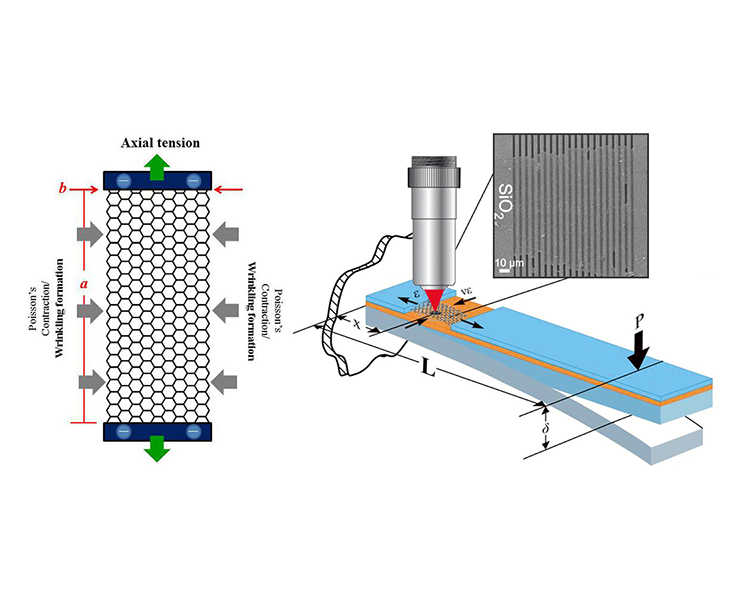News
Prof. C. Galiotis, Collaborating Faculty Member of FORTH/ICE-HT, earns an ERC Advanced Grant entitled “Tailor Graphene”

(a) Flake geometry under tension experiencing compression in the lateral direction that leads to lateral (orthogonal) wrinkling, (b) cantilever beam for “bare” and “embedded” graphene flakes
Tailor Graphene is a comprehensive and interdisciplinary programme of research funded by the European Research Council (Advanced Grant), aiming to determine the full response of graphene to extreme axial deformations up to failure and to measure directly its strength, stiffness, strain-to-failure and the effect of orthogonal buckling to its overall tensile properties. Already, several monolayer graphene flakes with various length to width ratio having examined at moderate strains while the internal deformation is examined by collecting simultaneously Raman spectra at steps as small as 100 nm. Under compression the critical strain to buckling was found to be ~ -0.6% and independent of the flake’s dimensions. Also, it was found that a minimum length of about 4 μm is needed in order to have sufficient stress transfer from the surrounded polymer to the graphene.
In Tailor Graphene, we will make good use of all these findings by altering the geometry of the flakes and thus design graphene strips (micro-ribbons) of specific dimensions which, when embedded to polymer matrices, can be stretched to large deformations and even failure without simultaneous buckling in the other direction. This is indeed the only route possible for the exploitation of the potential of graphene as an efficient reinforcement in composites. Since orthogonal buckling during stretching is expected to alter the Dirac spectrum and consequently the electronic properties of graphene, we intend to use Raman spectroscopy, to produce stress/strain maps in two dimensions in order to quantify fully this effect from the mechanical standpoint. Finally, another option for ironing out the wrinkles is to apply a simultaneous thermal field during tensile loading. This will give rise to a biaxial stretching of graphene which presents another interesting field of study particularly for already envisaged applications of graphene in flexible displays and coatings.
For further information please contact with:
Costas Galiotis, Prof.
FORTH/ICE-HT & Department of Chemical Engineering, University of Patras
FORTH/ICE-HT
Stadiou Street, Platani
P.O.Box 1414, GR-265 04
Patras, Greece
Tel.: +30 2610 965 255
e-mail: c.galiotis@iceht.forth.gr


